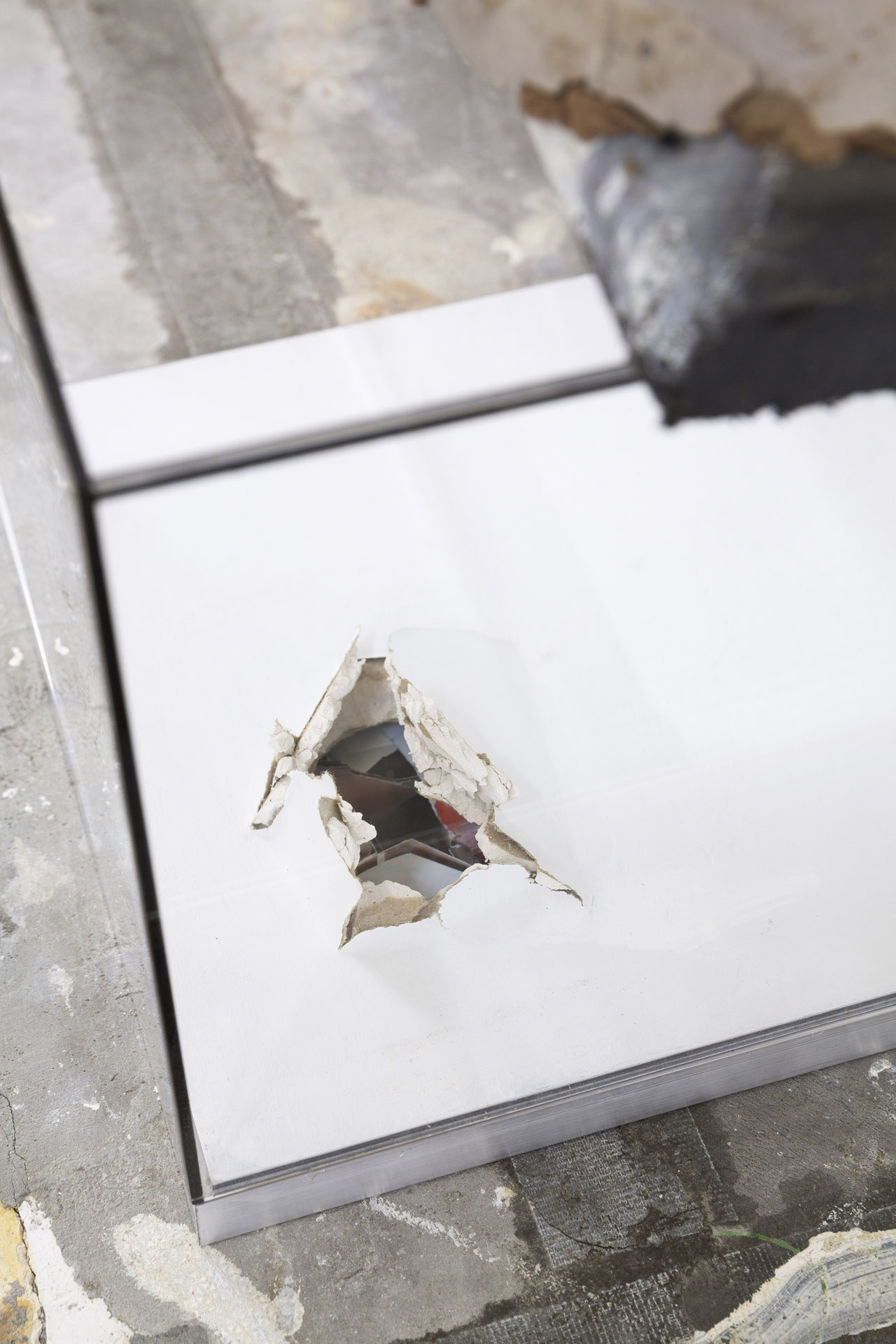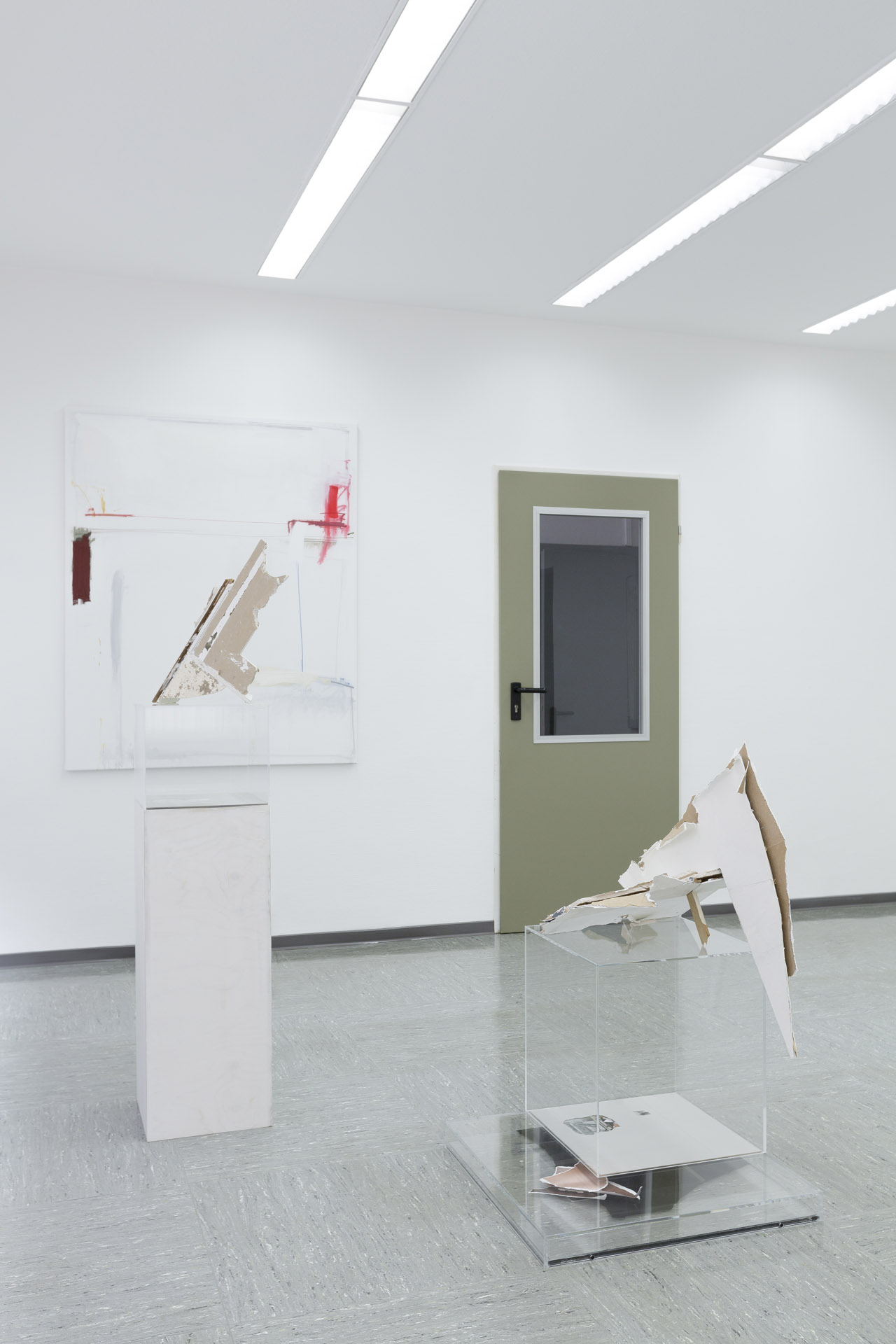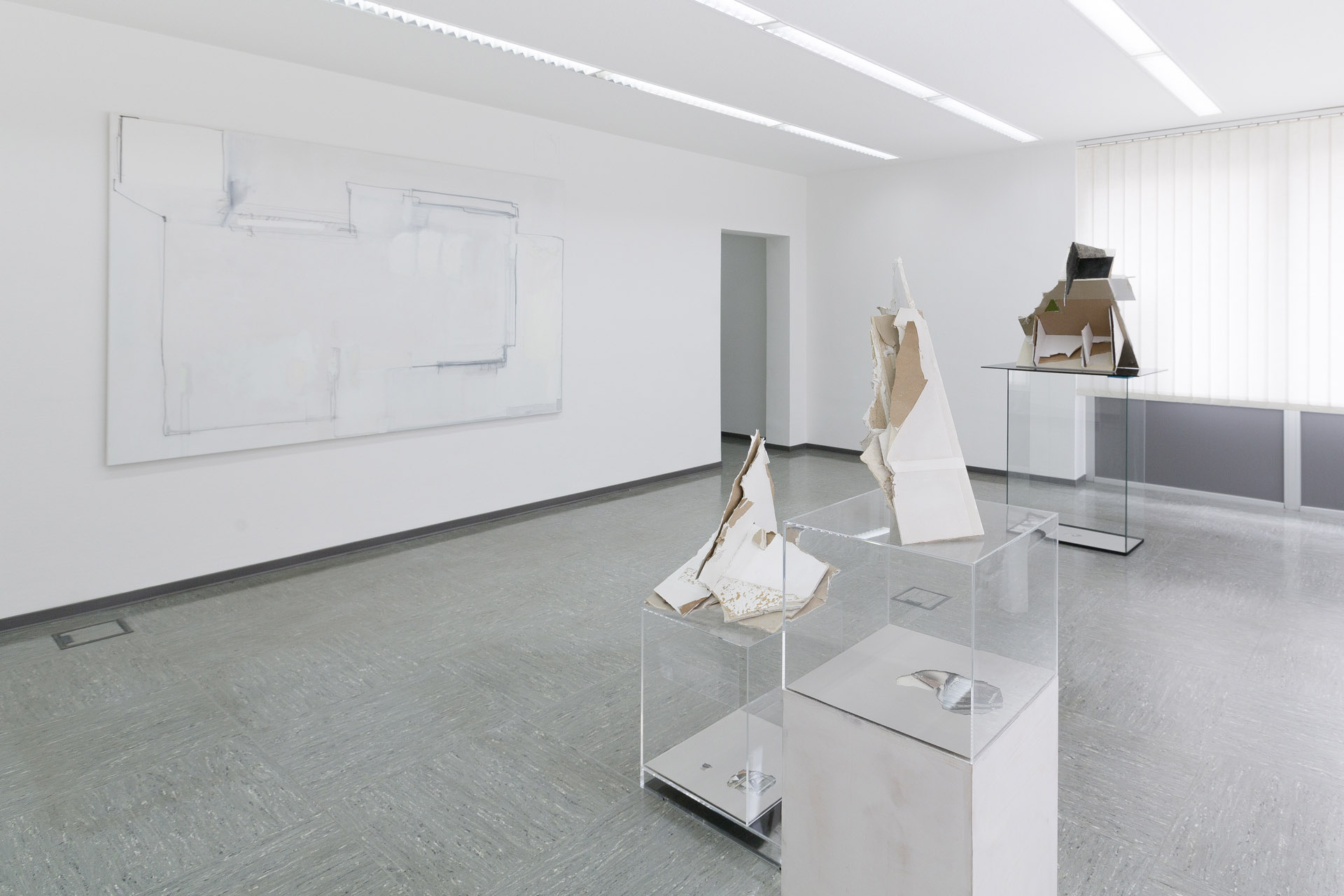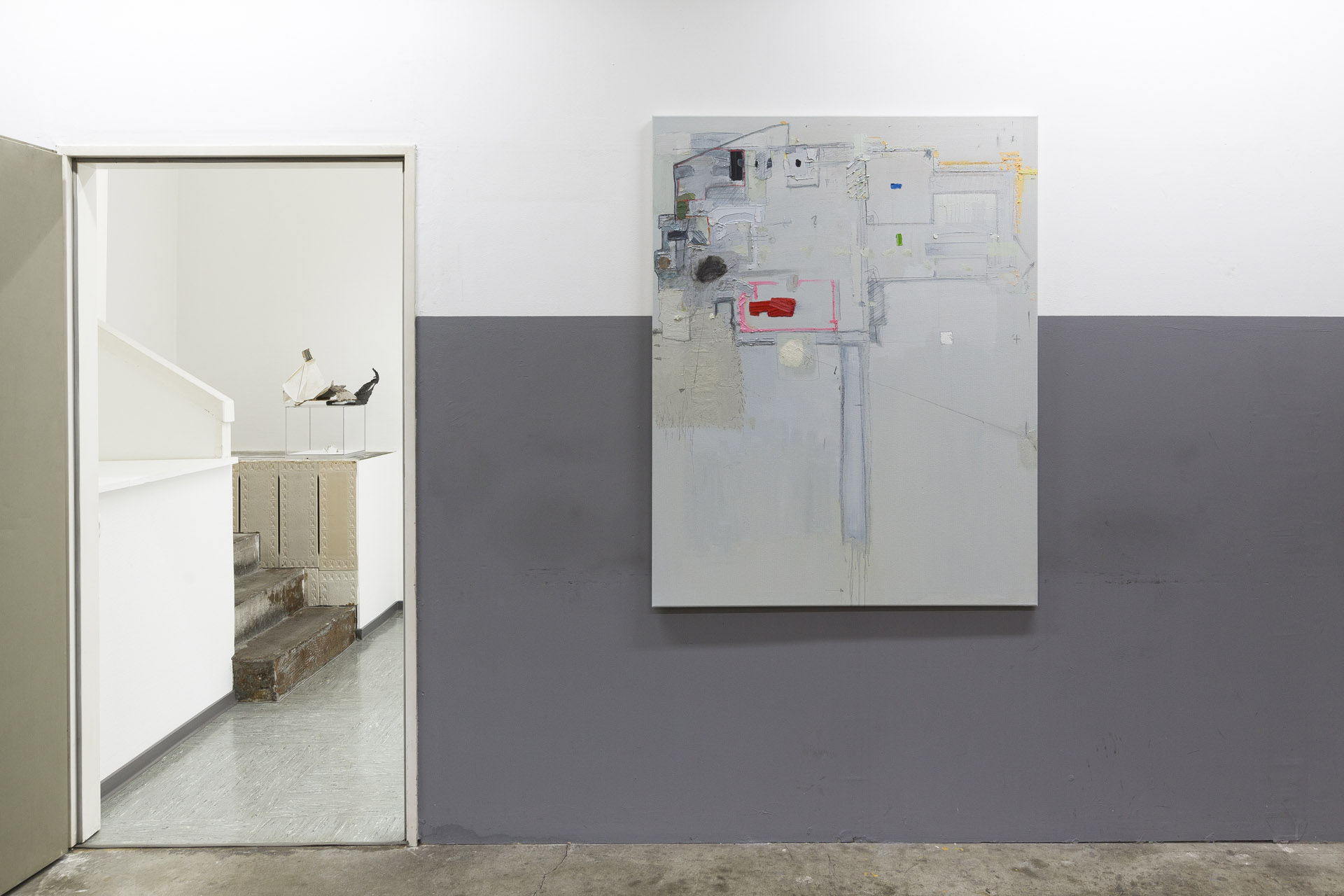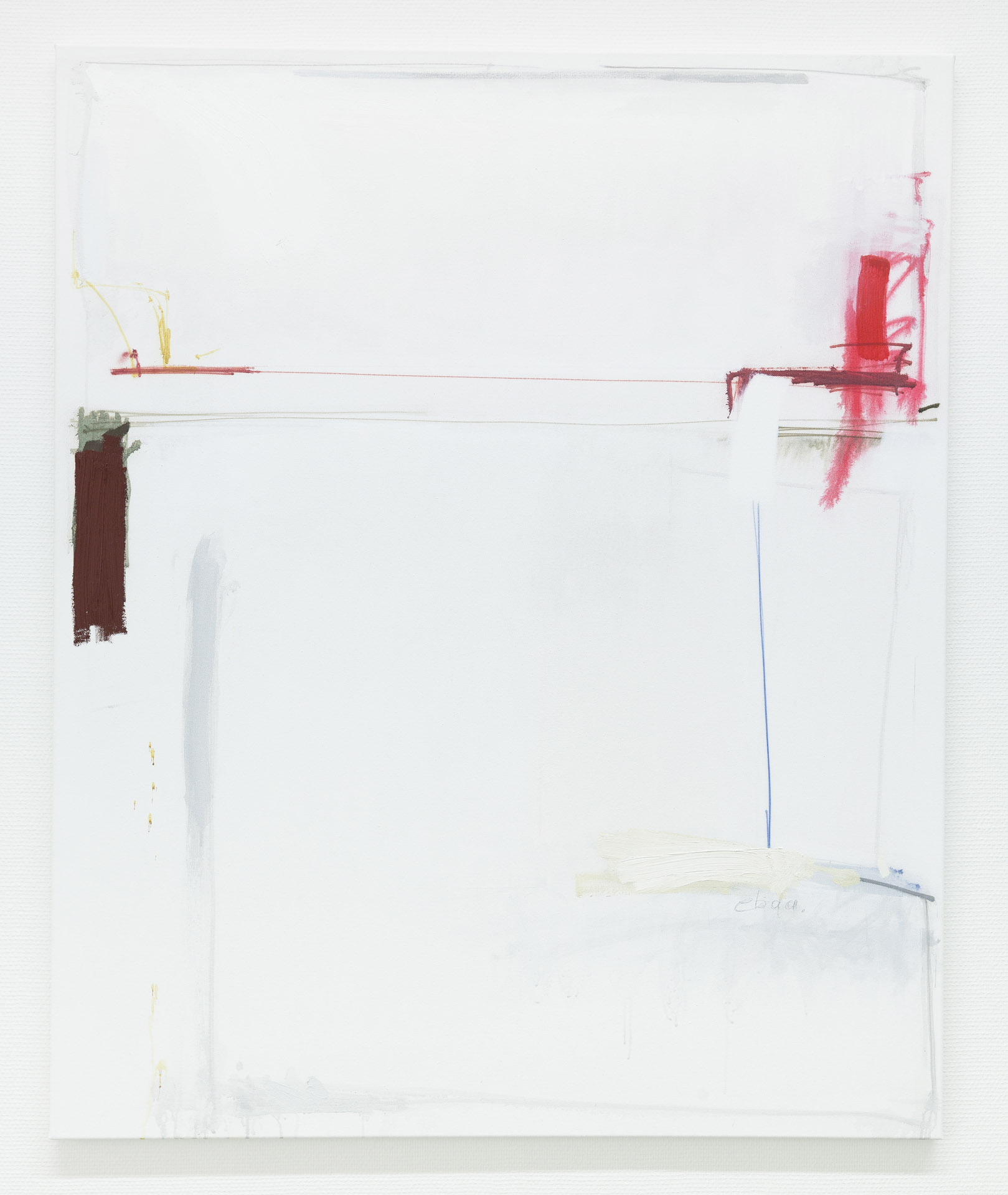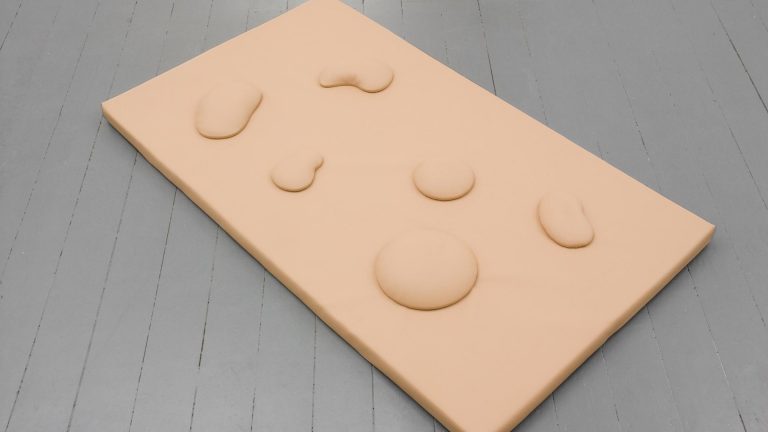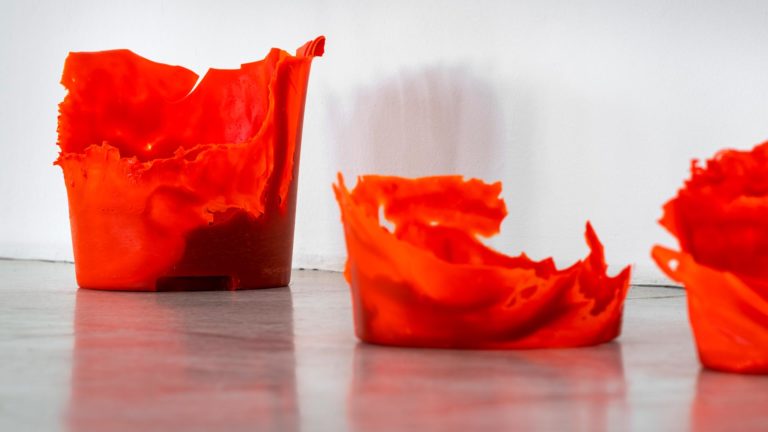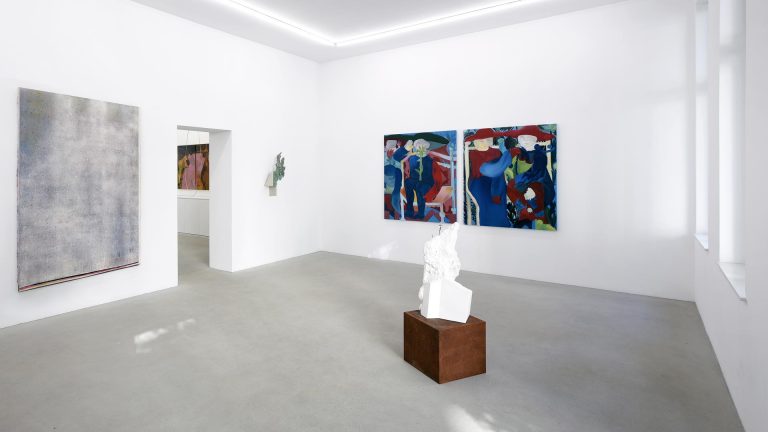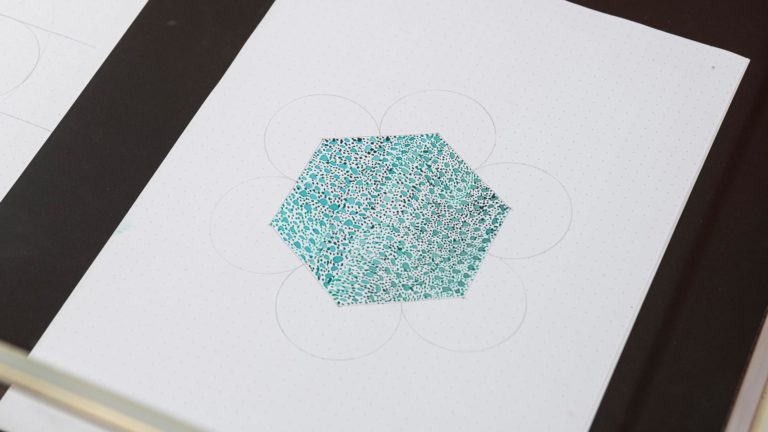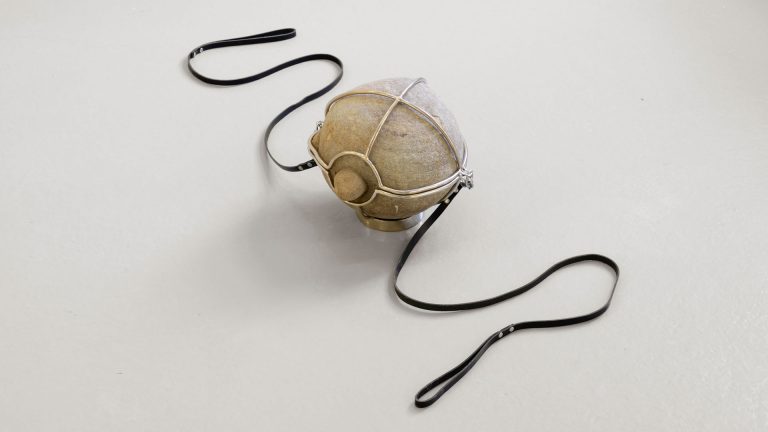Artists: Felix Schramm, Tristan Wilczek
Venue: Markus Lüttgen, Düsseldorf, Germany
Date: June 20 – August 7, 2020
Photography: all images copyright and courtesy of the artists and Markus Lüttgen, Düsseldorf
In the most recent works from Felix Schramm’s Accumulations, the heterogeneity of found and made items has given way to a clearly more reduced presentation. Restrained in color, sparing in the choice of resources, the aspect of “space”—a key reflective category for Felix Schramm in general—is instead given a new perspective; sculptural strategies are an “occupation of space, of a space limited by forms.” When, for example, the plasterboard elements so characteristic of Schramm’s work appear here in a clean, almost purist manner—instead of drifting in the direction of sculptural imagery through the targeted use of color—an unobstructed view of the construction element is revealed. With sometimes torn, sometimes molded edges, the inner workings of composition and decomposition, these elements seem, for the first time, rather soberly reduced to a basic function: the production of a space in the openness of settlement and dissolution. At the same time, in view of Schramm’s sculptural approach, it is hardly surprising that this production of spatiality appears fractured in several places.
In the current works, all of which are titled accumulated (Tract), this is connected with completely different strategies of showing, differing registers of presentation and display: showcases, some stacked, some divided into several compartments, become objects of storage and tools of display, but also registers of dissolution and destabilization. Various cherished tenets of artistic doctrine are undermined without hesitation, such as when the interior and exterior of a showcase are intertwined, for example, or when a peep box becomes a plinth. Last but not least, many of the showcases here appear half-abandoned; display is portrayed as a space of possibility, when, instead of a potential exhibit, the flatware of photographic representation has taken its place at the edge of a Plexiglas box.
Yet this is also connected with the fact that the tension—which is always tangible in these Accumulations, anyway—between a real spatial invasion and the ambivalence of the mock-up is intensified even further. This is demonstrated first of all by the aforementioned plasterboard elements: while they protrude into the space in a very real way, their reference to larger spatial interventions that literally break open the white cube mean that they act as a model at the same time, thus interconnecting different spaces, the present and the absent. This tension gains an additional twist through the graphic elements used here for the first time, which depict Schramm’s formal language in a reduced, comic-like interpretation. At times, the real space expands into a grotesquely exaggerated, quasi-cinematic postapocalyptic disaster scenario, at other times, these elements serve more to institute an analogue, a similarity relation established through the formal, which opens up the sculpture to a further axis of reflection, which we shall provisionally call “representation.”
Accumulations, then, not only of things, materials, and ways of showing, but also of spaces—real and fictitious, micro and macro, symbolic and aesthetic—within which they are unfolded, traversed, and reassembled in new configurations.
This “synthetic spatiality” is formulated in a completely different way in the works of Tristan Wilczek. For him, the question of space is first and foremost driven by an examination of the contexts of comprehension and cognition underlying the idea of the image itself. Diagrammatic logic is an essential theoretical reference here: the relationships between image and text that make even complex facts clearly representable through their spatial-relational arrangement. Entire infrastructures spread out across the image spaces of the mostly large-format canvases, in which the supposedly familiar imagery is scrutinized for its deep grammar. What is relevant to the question of space, however, are not only those relationships that stabilize the image space, that arrange and distribute signs and motifs—spatial structures, arrows, and substitution ratios drawn in pencil—but also processes of displacement and the dissolution of forms and meanings.
It is through the materiality of the medium of painting that a purely relational understanding of the image space—the question of how order is asserted in the image through connections between elements—is opened up, and the possibility of targeted deviation from a previously formulated regularity is brought into play. Geometric, planar zones, which initially establish spatiality as a relational structure, melt elsewhere, liquefy. The application of paint in a relief-like, impasto style signals a point in space that may well be diagrammatically integrated, yet, as a sheer agglomeration of material color, simultaneously undermines the ostensible legibility of what is being formulated.
In any case, Wilczek is not concerned with the retroactive depiction of already concluded reflective processes, providing the viewer with an easy way out with a result that is already inscribed in the image for the later, solitary, one-sided task of deciphering the work. Instead of a retrospective summary of knowledge contexts, the diagrammatic here is the starting point for speculative thinking—which ultimately extends the image space into the viewing space. On the one hand, the works seem to formulate the rules of their own production in order to assert an antecedence of language and knowledge dispositifs; on the other hand, they also appear as the results of such rules of production, thus insisting on the autonomy of the aesthetic field with rules and criteria that are valid only here. The latter, the endemic nature of the image space (which, incidentally, is anything but uninteresting when it comes to the “realism” of the image), hermeneutically speaking, means nothing other than that which is imposed on it from the outside no longer corresponds with the inner arrangement of its components. At the same time, however, it also means establishing a shared space with the viewer in order to be able to reflect on the premises that are at the basis of “image” as “space” here. Instead of an unfolded and accumulated space, that is, a nested space that constantly interrogates itself, it continues, as an apparatus of experience and cognition, to experiment with the conditions that allow space to have space, and allow space to become form.
-Sebastian Hammerschmidt









